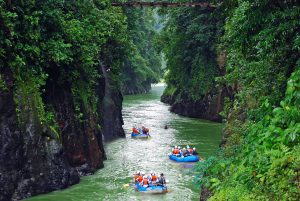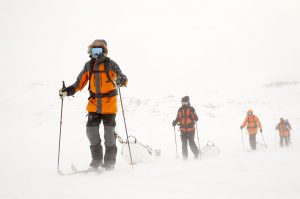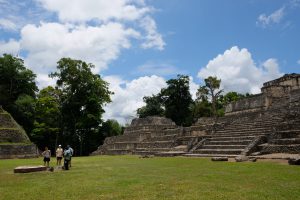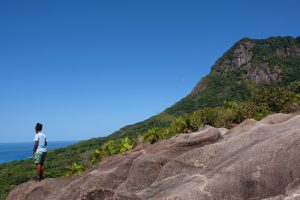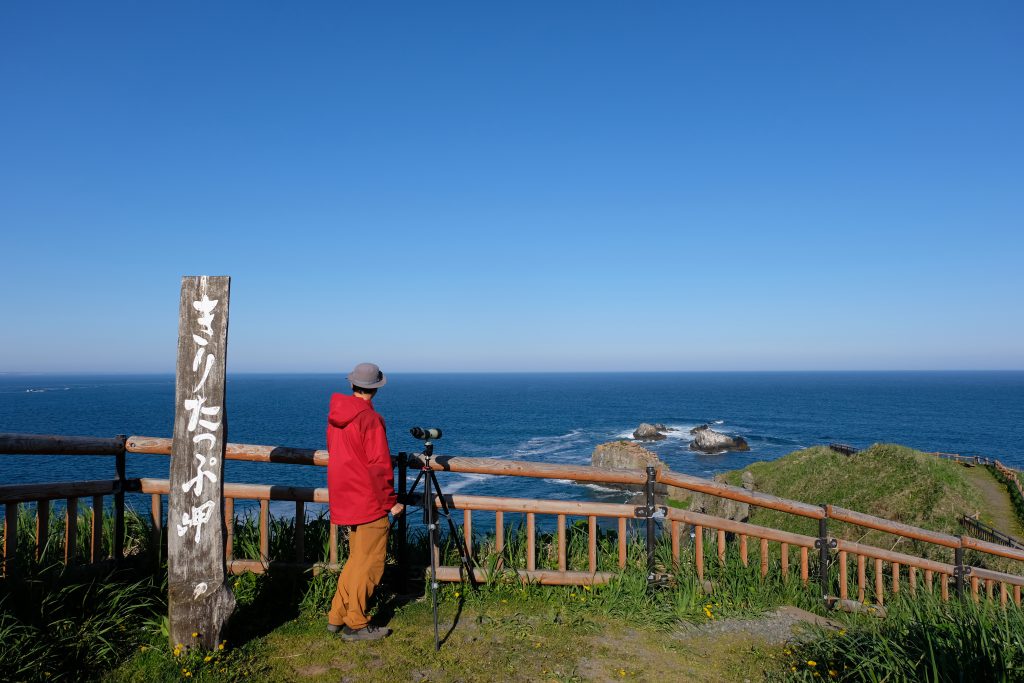
The rugged volcanic scenery and show-stopping wildlife of Hokkaido island — Japan’s last true wilderness — are ripe for exploration
View online at natgeotraveller.co.uk
Hokkaido’s untamed beauty should need no introduction. Offering the perfect antidote to the neon-lit hedonism of Tokyo, the northernmost island of the Japanese archipelago is a rugged, volcanic wonderland of fishing hamlets, and pristine forests bubbling with hot springs and home to 3,000 brown bears. But Hokkaido’s charms aren’t widely known; only the intrepid make the pilgrimage north. It’s real off-the-beaten-track territory, a jackpot destination for hikers, wildlife buffs and anyone with a hankering to try Japan’s best seafood.
I pick up a local guide for a week and go looking for adventure in the wildest corner of the island; the eastern Do-to region. It’s home to three of Hokkaido’s six national parks: Akan, with its tranquil caldera lakes, world-famous fly fishing and settlements of indigenous Ainu people; the Kushiro Wetlands, teeming with birdlife and wildflowers; and the UNESCO World Heritage Site of Shiretoko. It’s the latter that really captures my imagination. The Ainu name for the peninsula means ‘the end of the world’, and for good reason: the towering active volcanoes and treacherous sea cliffs make for an inhospitable frontier. Here, Mother Nature runs the show: in summer, bears snag leaping salmon from the mouths of the rivers and orcas congregate off the coast, while in winter its frigid waters are choked with drift ice as far as the eye can see.
I enter Shiretoko National Park via its Goko Lakes Trail on a clear summer’s day, following esteemed ranger Mr Matsuda into prime bear territory. Up on the lush Iwaobetsu tableland, five lakes act as mirrors for the hulking Mount Rausu (5,446ft) and sister peaks. Every twist of the trail reveals a paw print in the dirt, nibbled skunk cabbages (a favoured snack), dung or deep scratches on a tree trunk. I learn that in Hokkaido, even if you can’t see the bears, they’re very much there. goko.go.jp
Catch of the day
Chopsticks at the ready! Hokkaido is the breadbasket of Japan. Its dairy farms have resulted in a local obsession with fantastically rich ice cream, and its fertile waters mean that haute cuisine — including crab, oysters and salmon roe — is even served up at roadside stations. For a hands-on gourmet experience, Maruuo Hamada Shoten in Rausu teaches diners how to shuck sea urchins before serving them up with the freshest sashimi.
Gone fishing
It’s 5am, I’m deep in the spruce forests of Akan National Park and despite my inexperience at fly fishing, I’ve got a bite. Mr Takada, wearing rubber waders up to his armpits, splashes over to help me reel it in. He’s been fanatical about the sport for years: “It’s cheaper than therapy,” he jokes. From the forest, we try our luck on the open expanse of Lake Akan, where the dark volcanoes and forests on the far shore appear as misty silhouettes in the morning light. When it’s time to leave for breakfast, Mr Takada can’t tear himself away. “Just one more minute,” he insists, casting out again. He’s well and truly hooked. hokkaido-sightseeing.com/en
Go native
The culture of the indigenous Ainu people lives on in the town of Akanko Onsen, on Lake Akan’s southern shore. While the village is largely geared towards tourists, its restaurants, shops and theatre are a great place to glimpse ancient traditions on the brink of extinction. akanainu.jp
Urban jungle
Hokkaido’s major city, Sapporo, has a reputation for sensational cuisine. But to really appreciate eateries like Ramen Yokocho — an atmospheric alley packed with steaming kitchens serving up Hokkaido’s hearty, miso-based twist on the classic noodle dish — it’s best to have worked up an appetite. Luckily, the cosmopolitan core of the city is enclosed by stunning natural scenery including Lake Shikotsu to the south, where you can rent a clear-bottom kayak from Ocean Days dive shop and spend hours watching fish flit in pellucid waters. To the east are the city’s lungs: the Nopporo Forest Park, where a hired naturalist can teach you about the folklore and practical applications of Hokkaido’s flora for the Ainu. Pair the tour with a visit to the Hokkaido Museum to better grasp the ecology and history of the region, and stay tuned: a museum dedicated to the Ainu will open in 2020.
Cabin in the woods
Mr Hidaka and his two labradors are masters of a serene, isolated parcel of land. After a tour of the Potoro Guide Lodge, we’re outside on the deck, peering through binoculars at a pair of nesting red-crowned cranes. Mr Hikada is a wildlife expert who, when not cooking up feasts for his guests, takes them out on the Kiritappu Wetlands. From blustery Cape Kiritappu we spy seals bobbing in the surf, and when squelching along a wetland trail discover mussels, fish and frogs, and sika deer grazing among gold amur daylilies.
The end of the world
A storm is brewing on the Sea of Okhotsk. The horizon is blotted by fog and a cold wind is churning the dark tides. It’s far from ideal boating weather, and the fact that my captain has the weatherbeaten face of a man who’s survived a dozen tempests, is doing little to calm my nerves. He’s steering our repurposed fishing skiff out of Rausu harbour and into the choppy, open waters off the Shiretoko peninsula. Bouncing along on the waves beside us is another dinghy full of travellers, headed up by Mai, the guide for this bear spotting expedition.
“It takes experts to survive and navigate these conditions. Years of experience. Other operators have called off their trips today, but you can trust us!” she’d assured me back on land, as we struggled into heavy-duty fishermen’s jackets and waxed trousers. Our two boats head north, tracing the cragged coast where clusters of fishing huts quickly peter out into thick forests and sheer cliffs formed by ancient lava flows. Waterfalls appear like delicate threads and plunge into frothy shallows. Looming out of the mist are the snow-capped volcanoes that form the humped spine of Shiretoko National Park. It’s scenery straight out of The Lost World; I’m half expecting a pterodactyl to burst from the tree line.
Mai’s voice is piped into our boat via wireless loudhailer. It’s crackly and at times barely discernible over the howl of the wind. I think she’s saying, “Hold on tight.” The engine revs and we power around a sea stack full of nesting cormorants. Here, an eerie mist boils up from the sea. The lower rock is darker, scraped and scarred — eroded by the drift ice that clogs the channel every winter. We speed onwards, spotting sea eagles and rock formations shaped like petrified monsters. Atop a promontory stands a lonely, blood-red archway. A fellow passenger explains that it’s a shrine for the fishermen who have died here, shipwrecked or lost. She adds, somberly, “there’s a local legend about a captain who killed and ate his crew as they drifted, starving, through the fog for months.”
Before the full horror of the story registers, there’s a cry from the other boat: Mai’s spotted an Ezo brown bear, or higuma in the local tongue, on the shore. Both vessels slow down and chug near — so near, in fact, that I don’t need binoculars. These notoriously aggressive bears can weigh up to half a tonne, and encountering one of the 600 who roam Shiretoko is every hiker’s worst nightmare. Anyone setting off into the woods is advised to tie a kuma-yoke bear bell to their rucksack to deter the beasts. But from the boat I can get a good look without fear of mauling. He’s a young bear — perhaps only a few years old. I note his sloping back and powerful shoulders, and the deep plush of his coat. He’s using his giant paws and snout to rip into a gelatinous squid, and stops to eye us up briefly before returning to his meal.
The indigenous people of Hokkaido, the Ainu, revered bears as spirit guardians, although their fortunes took a turn for the worse with the arrival of Japanese settlers who hunted them as pests. Today, brown bears are back on top, encouraged to thrive in these forests, where they graze on shoots and fish. We continue, and spot five more bears across the steep bluffs, including an adorable cub, which elicits squeals of “kawaii!” (cute) from my crewmates.
On the final stretch, heading to the cape, we’re engulfed by fog. I lose sight of the landscape first, then Mai’s boat. We cut the engine to avoid a collision and float in the dense cloud. It’s thoroughly spooky. I search the captain’s face for any signs of hunger. He seems unperturbed, and Mai’s disembodied voice crackles reassurance through the speaker every few minutes. When the fog shifts — almost as quickly as it rolled in — there’s blue sky and a clear horizon. Shiretoko Cape is in full view with its striped lighthouse. I notice for the first time the flimsy, white jellyfish pulsing through kelp in the water around us. Across the straight we can see the mountainous silhouette of Sakhalin Island, occupied by the Russians since WWII.
There’s a few minutes of peaceful bobbing before we race back to port. I realise I’m drifting at the physical and conceptual periphery of Japan — a world away from the neon lights and modern skyscrapers of Tokyo. The first peoples of Hokkiado considered this point the end of the world, but now, it’s a window back in time to the beginning. shiretoko-rausu-lincle.com
ESSENTIALS
Getting there
Airlines including British Airways offer daily direct flights to Tokyo from the UK. Connect to Sapporo’s New Chitose Airport, Memanbetsu Airport or Kushiro Airport using carriers such as Japan Airlines and Air Do.
Getting around
A car is necessary to access the wildest corners of Hokkaido. Rental is available at most airports, but book ahead. Alternatively, employ a driver and English-speaking guide through an operator like Hokkaido Treasure Island Travel, who can organise bespoke itineraries.
When to go
The warm summer season in Hokkaido is perfect for hiking and is the best time to spot whales and brown bears (average temp. 22C). Autumn brings spectacular fall colours, while winter is famous for snow sports (average temp. -4C).
Produced in association with Hokkaido Tourism Organization. en.visit-hokkaido.jp
Published in the Adventure guide, distributed with the September 2018 issue of National Geographic Traveller (UK)





